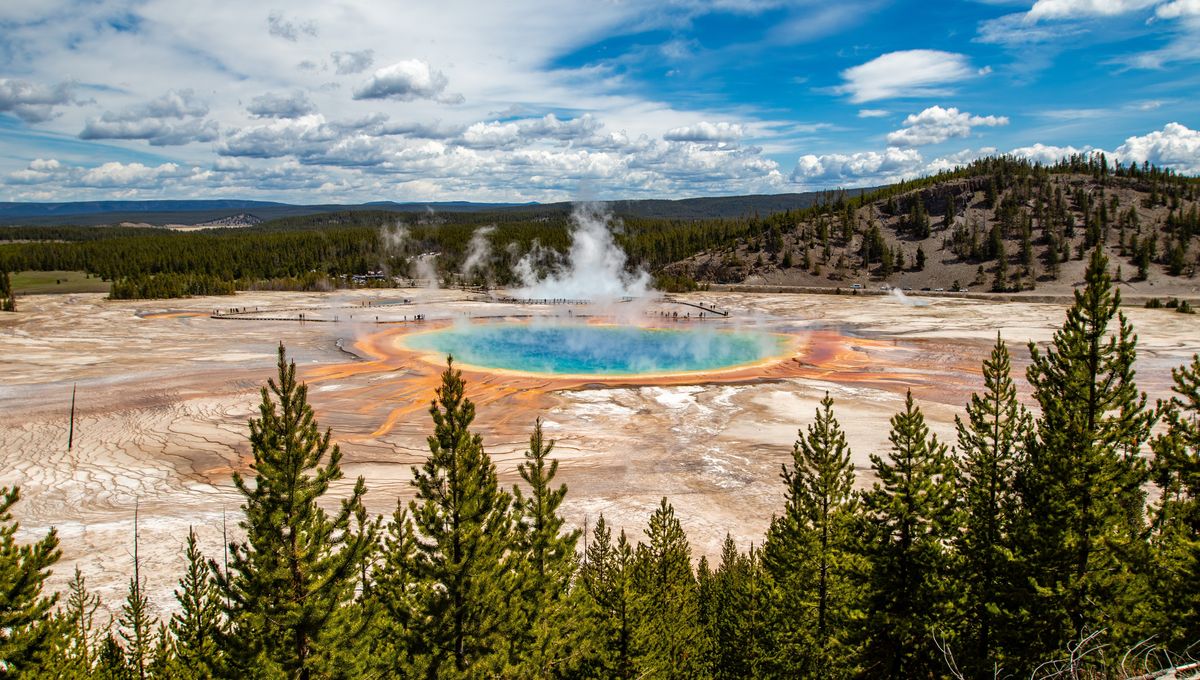
The Yellowstone supervolcano is extremely well studied, but that doesn’t mean it is fully understood. Researchers have just discovered a new structure deep beneath Yellowstone, and it might be playing an important role in holding back an eruption from this major volcanic system.
Researchers from across the US have been using seismic data and computer modeling to work out the deeper layer underneath Yellowstone. They have found evidence of what they are calling a sharp, volatile-rich cap located 3.8 kilometers (2.36 miles) below the surface. Basically, this works as a lid to the magma, allowing for gas to be released into the above layers but keeping the system stable.
“For decades, we’ve known there’s magma beneath Yellowstone, but the exact depth and structure of its upper boundary has been a big question,” co-author Brandon Schmandt, professor of Earth, environmental and planetary sciences at Rice University, said in a statement. “What we’ve found is that this reservoir hasn’t shut down – it’s been sitting there for a couple million years, but it’s still dynamic.”
There was a large uncertainty about where the magma was located. The team had to put a lot of work into finding it, as the data was not straightforward to analyze. Collecting the data was also interesting. The team used a vibroseis truck, a vehicle that can send tiny earthquakes into the ground,
The team looked at the reflection of these waves to study the interior layers. They comment that the lid appears to be breathing, which suggests it is unlikely that an eruption is in any way imminent.
“Although we detected a volatile-rich layer, its bubble and melt contents are below the levels typically associated with imminent eruption,” Schmandt said. “Instead, it looks like the system is efficiently venting gas through cracks and channels between mineral crystals, which makes sense to me given Yellowstone’s abundant hydrothermal features emitting magmatic gases.”
The research places a clear structure deep beneath the supervolcano. Future monitoring could focus on characterizing it more. If the structure begins to melt or gas accumulation changes, it might indicate that things are shifting or moving towards an eruption. The approach developed in this work might have applications beyond volcano monitoring.
“Being able to image what’s happening underground is important for everything from geothermal energy to storing carbon dioxide,” Schmandt said. “This work shows that with creativity and perseverance, we can see through complicated data and reveal what’s happening beneath our feet.”
A paper describing the results is published in the journal Nature.
Source Link: Yellowstone Supervolcano Has A Magma "Lid" That Could Be Thwarting Eruption